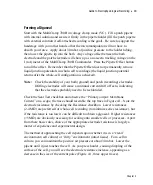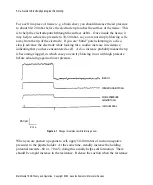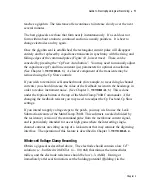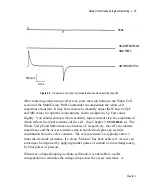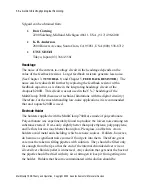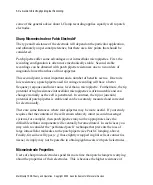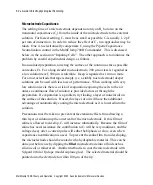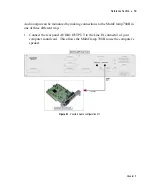
62
•
Guide to Electrophysiological Recording
Microelectrode Capacitance
The settling time of a microelectrode depends not only on R
e
but also on the
transmural capacitance (C
t
) from the inside of the microelectrode to the external
solution. For fastest settling, C
t
must be as small as possible. C
t
is usually 1-2 pF
per mm of immersion. In order to reduce the effect of C
t
, two approaches may be
taken. One is to electronically compensate C
t
using the Pipette Capacitance
Neutralization control in the MultiClamp 700B Commander. This is discussed
below, in the section on “Impaling Cells”. The other approach is to minimize the
problem by careful experimental design, as follows.
In an isolated preparation, lowering the surface of the solution as far as possible
can reduce Ct. For a long slender microelectrode, 200
µ
m or less is regarded as
a low solution level; 500
µ
m is tolerable. Deep is regarded as 1 mm or more.
For a microelectrode that tapers steeply (
i.e.
a stubby microelectrode) deeper
solutions can be used with less loss of performance. When working with very
low solution levels there is a risk of evaporation exposing the cells to the air
unless a continuous flow of solution is provided across or through the
preparation. If evaporation is a problem, try floating a layer of mineral oil on
the surface of the solution. If used, this layer of oil will have the additional
advantage of automatically coating the microelectrode as it is lowered into the
solution.
Precautions must be taken to prevent surface tension effects from drawing a
thin layer of solution up the outer wall of the microelectrode. If this film of
saline is allowed to develop, C
t
will increase substantially. Because the film of
saline has axial resistance the contribution to C
t
will be very nonlinear, and the
voltage decay after a current pulse will either be biphasic or slow, even when
capacitance neutralization is used. To prevent the saline film from developing,
the microelectrode should be coated with a hydrophobic material. This can be
done just before use by dipping the
filled
microelectrode into a fluid such as
silicone oil or mineral oil. Another method is to coat the microelectrode with
Sylgard #184 or Q-dope (model airplane glue). The selected material should be
painted onto the electrode to within 100
µ
m of the tip.
MultiClamp 700B Theory and Operation, Copyright 2005 Axon Instruments / Molecular Devices


